1.Introduction
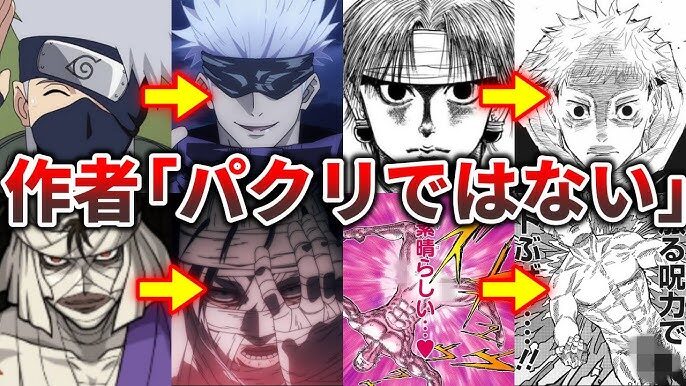
Jujutsu Kaisen has been stirring up excitement, especially as the climactic battle with Sukuna unfolds at breakneck speed.
Alongside its popularity, however, the series has ignited controversy over its use of homages to other iconic works.
Fans in Japan have been debating: is this respectful homage, or is it simply too much?
In the official fanbook, Jujutsu Kaisen’s author, Gege Akutami, acknowledged that “countless manga have influenced” their work.
Akutami openly admits to integrating many elements from other series, stating that they aimed “to confront the classic themes head-on.”
As such, familiar scenes and structures appear frequently, often by design.
But the series’ liberal use of such homages has sparked mixed reactions, with some fans in Japan saying, “It’s just too much.”
Let’s dive into the details, exploring the primary examples of homage (or copying) and the responses they’ve generated.
2. Major Homage Examples: Side-by-Side Comparisons

Below is a breakdown of some of the most notable homages in Jujutsu Kaisen, comparing similar elements from popular manga and anime.
2-1. NARUTO
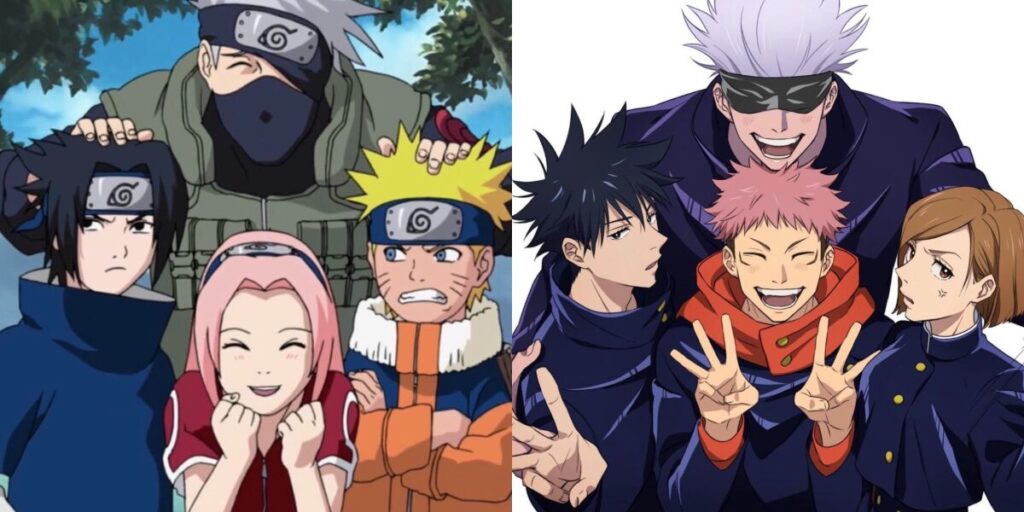
- The Nine Tails and Sukuna
Just as Naruto coexists with the Nine Tails fox sealed within him, Yuji Itadori hosts Sukuna, the powerful “King of Curses.” In both cases, the protagonist has a formidable power source within, capable of taking over if not kept in check. Naruto’s journey of bonding with the Nine Tails contrasts with the ever-hostile Sukuna in Yuji’s case. - Team 7 and Jujutsu High First-Year Trio
Naruto’s Team 7—consisting of Naruto, Sasuke, and Sakura, led by Kakashi—parallels Jujutsu Kaisen’s first-year team: Yuji, Megumi, and Nobara, with Gojo as their mentor. Both groups feature an optimistic protagonist, a stoic and highly skilled dark-haired character, and a strong-willed female lead. - Kakashi and Satoru Gojo
Both characters share white hair, an eye-covering accessory, and a laid-back attitude concealing immense strength. Beyond their aesthetic similarities, both have faced emotional separations from close friends, adding to their mystique as mentors.
2-2. HUNTER×HUNTER

- Nen Abilities and Cursed Techniques
In HUNTER×HUNTER, characters wield unique abilities using their “aura” as energy, similar to Jujutsu Kaisen’s “cursed techniques” that harness “cursed energy.” Both systems require rigorous training, and each user’s abilities vary, adding strategic depth to battles. - Conditions and Vows vs. Binding Vows
HUNTER×HUNTER’s “Conditions and Vows,” where self-imposed limitations enhance abilities, is mirrored in Jujutsu Kaisen’s concept of “binding vows.” These limitations boost power, adding a psychological layer to each combatant’s abilities. - 11th Volume Cover
The cover art of Jujutsu Kaisen’s 11th volume, where Nanami touches his chin with his left hand, directly references HUNTER×HUNTER’s 11th volume, which shows Chrollo in a similar pose.
2-3. BLEACH
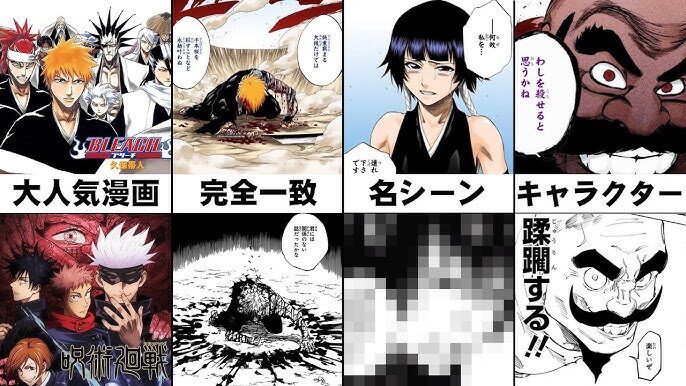
- The Shibuya Incident vs. Byakuya’s Battle
During the Shibuya Incident arc, Yuji braces against the ground with one hand after being slammed down, a scene reminiscent of Ichigo’s battle against Byakuya in BLEACH. The composition and energy of both scenes share noticeable similarities, especially in how the ground’s impact is illustrated. - Captain Yamamoto and Principal Gakuganji
BLEACH’s Captain Yamamoto, a stoic elder with a long white beard, parallels Jujutsu High’s Principal Gakuganji, another formidable senior figure who commands authority and wisdom. - Zaraki Kenpachi and Aoi Todo
Both characters embody the “battle-hungry” archetype, with Todo reflecting Kenpachi’s love of a good fight. Their raw strength and unorthodox fighting styles make them similar fan-favorites.
2-4. Evangelion
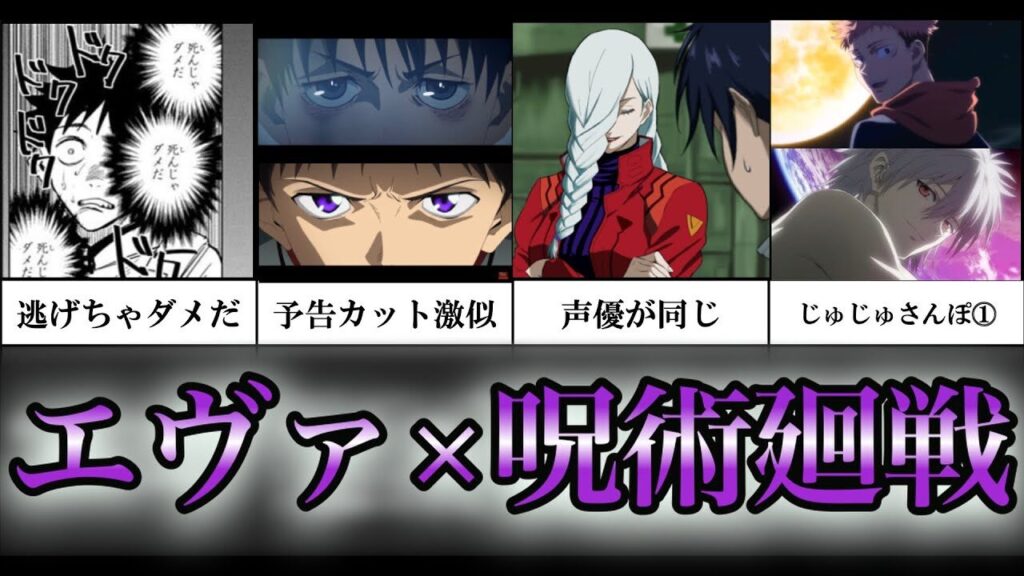
- The Culling Game and the Human Instrumentality Project
The Culling Game, a deadly event orchestrated by Kenjaku to elevate humanity to a new level, resembles Evangelion’s “Human Instrumentality Project,” which sought to unify humanity in a “higher” form. Both share philosophical overtones and deep existential stakes. - Shinji Ikari and Yuta Okkotsu
As introverted protagonists swept into conflicts far beyond their control, Yuta and Shinji share a parallel character arc. Both have internalized self-doubt and struggle with accepting their place in their respective worlds. - Eva Unit-01 and Mechamaru
Mechamaru’s design, especially during his battle in Shibuya, reflects the towering mecha of Evangelion, and fans have noted stylistic similarities to Unit-01’s design and movements.
2-5. Rurouni Kenshin
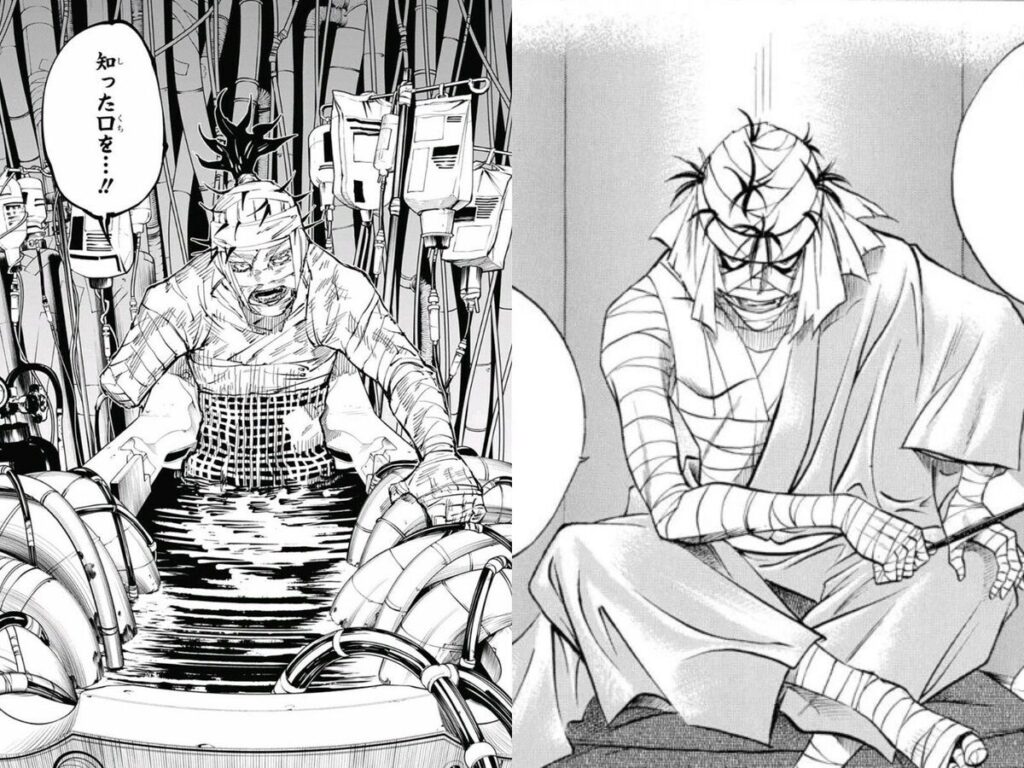
- Shishio Makoto and Mechamaru
The heavily bandaged Shishio from Rurouni Kenshin shares design traits with Mechamaru, who also appears wrapped in bandages due to physical limitations. The resemblance is further reinforced by both characters’ somber and resilient personalities.
2-6. Demon Slayer

- The “Burn Your Life” Line
In a heated battle, Jujutsu Kaisen’s Kamo calls out, “Burn your life!”—a line strikingly similar to Kyojuro Rengoku’s “Set your heart ablaze” from Demon Slayer. While subtle, this phrase echoes Rengoku’s powerful words of self-sacrifice.
2-7. Uzumaki
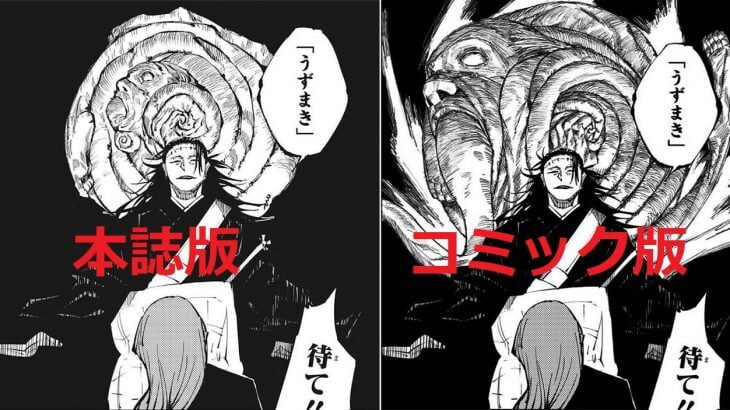
- Cursed Spirit Manipulation: Uzumaki
Jujutsu Kaisen’s “Uzumaki,” a cursed technique used by Suguru Geto, references Junji Ito’s horror manga Uzumaki. Both feature disturbing spiral designs, directly inspired by Ito’s grotesque visuals.
2-8. Fate Series
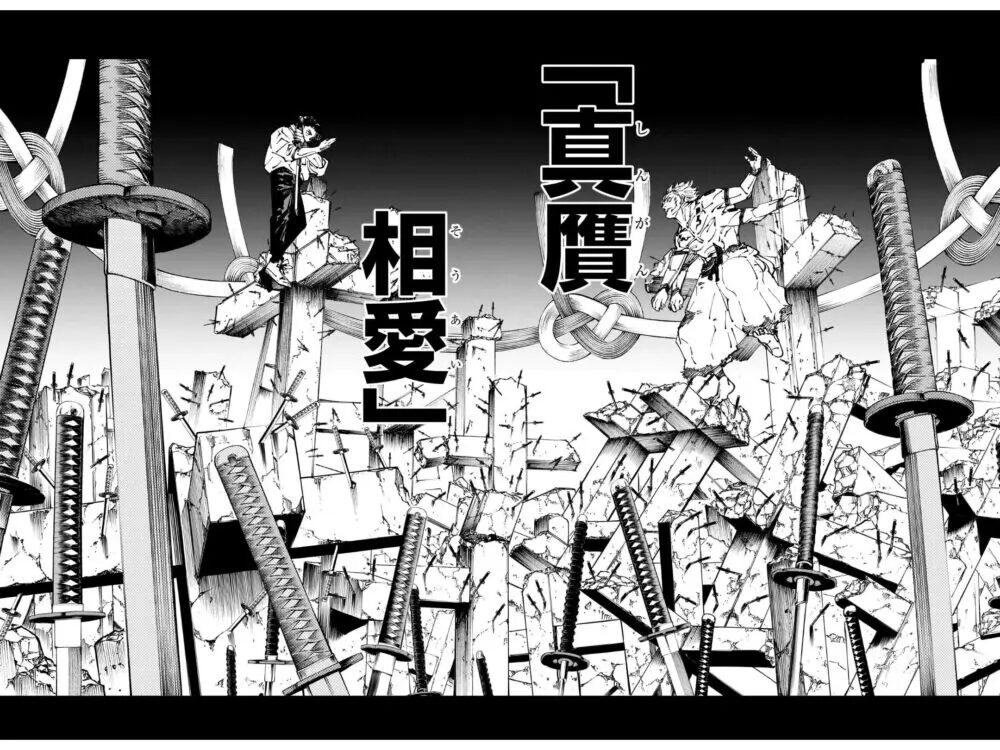
- Domain Expansion and Reality Marble
Jujutsu Kaisen’s “Domain Expansion” allows sorcerers to create personalized spaces with special effects. This concept parallels the “Reality Marble” in the Fate series, where mages create worlds reflecting their inner selves. - Unlimited Blade Works and Pure Love and Justice
In Jujutsu Kaisen, Yuta’s Domain Expansion, “Pure Love and Justice,” involves an array of weapons embedded in the ground, reminiscent of Fate’s Unlimited Blade Works. Both visuals suggest an unlimited arsenal laid out in a surreal landscape.
2-9. Mobile Suit Gundam
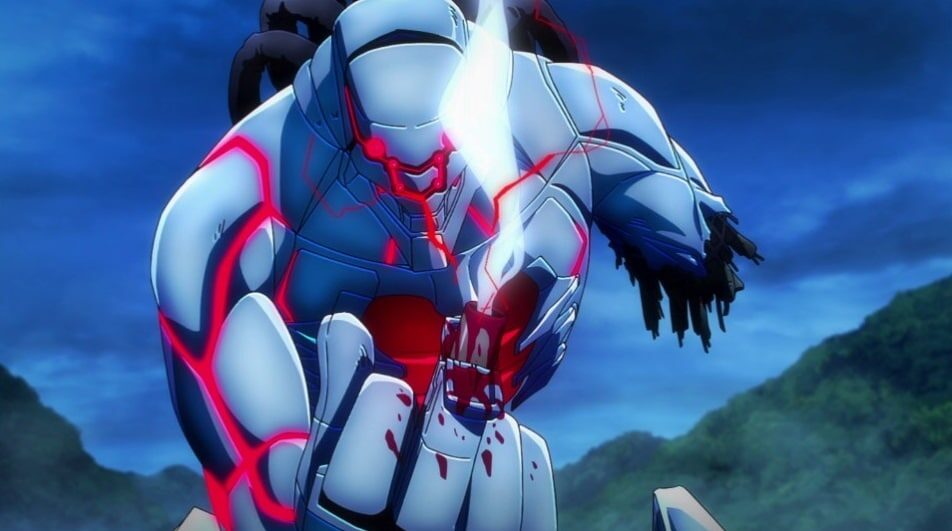
- “Going to Kill My Parent!”
In a climactic moment, Choso declares, “I’m going to kill my parent!”—a line evocative of Amuro Ray’s famous “Amuro, launching!” from Gundam. Both scenes resonate with a sense of duty and fate, albeit in vastly different contexts.
3. Fan Reactions to Jujutsu Kaisen’s Homages
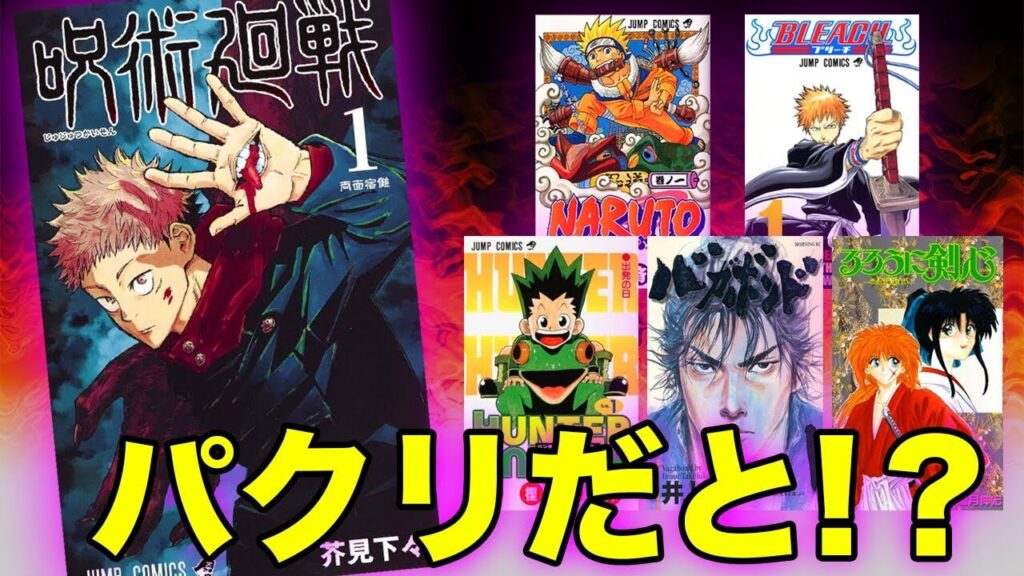
- Critics’ Reactions
Some fans express disappointment, feeling that the homages verge on plagiarism. They argue that such frequent references detract from the originality of Jujutsu Kaisen, creating a patchwork of borrowed ideas. - Supporters’ Perspectives
On the other hand, many fans appreciate the homages, seeing them as respectful nods to foundational series. For those unfamiliar with the original references, the homages don’t detract from the enjoyment and may even inspire interest in classic works.
4. Drawing the Line: Homage vs. Plagiarism
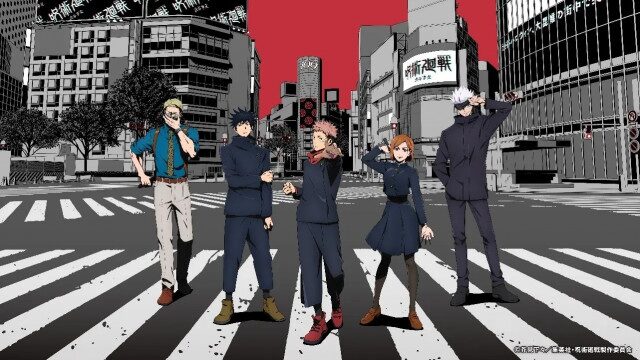
The line between homage and plagiarism can be blurred, especially in genres where storytelling archetypes overlap.
Akutami’s explicit acknowledgment of their influences reinforces the notion that these are intentional homages, aiming to pay tribute rather than plagiarize.
5. Conclusion
Jujutsu Kaisen’s numerous homages add a layer of depth and nostalgia for long-time fans of manga and anime, while sparking debate among viewers on what constitutes homage versus imitation.
Whether you see these nods as respectful tributes or too much of a good thing, it’s clear that Jujutsu Kaisen has sparked a discussion that keeps fans engaged.
As the series continues, we can look forward to more intriguing references while Akutami skillfully weaves familiar elements into new, original narratives.
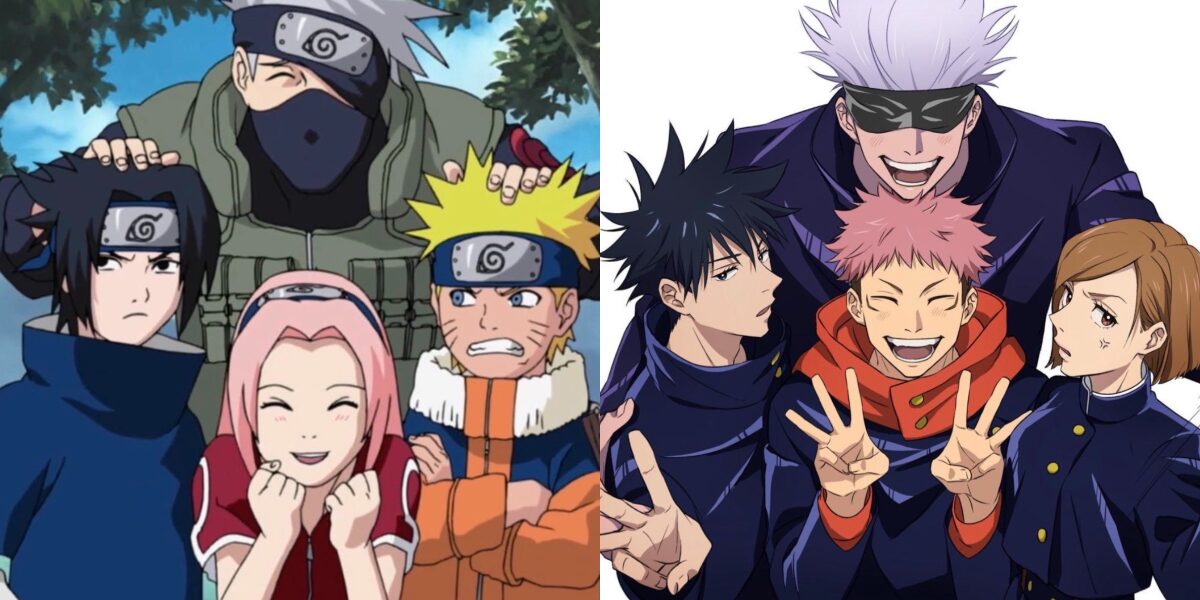





コメント